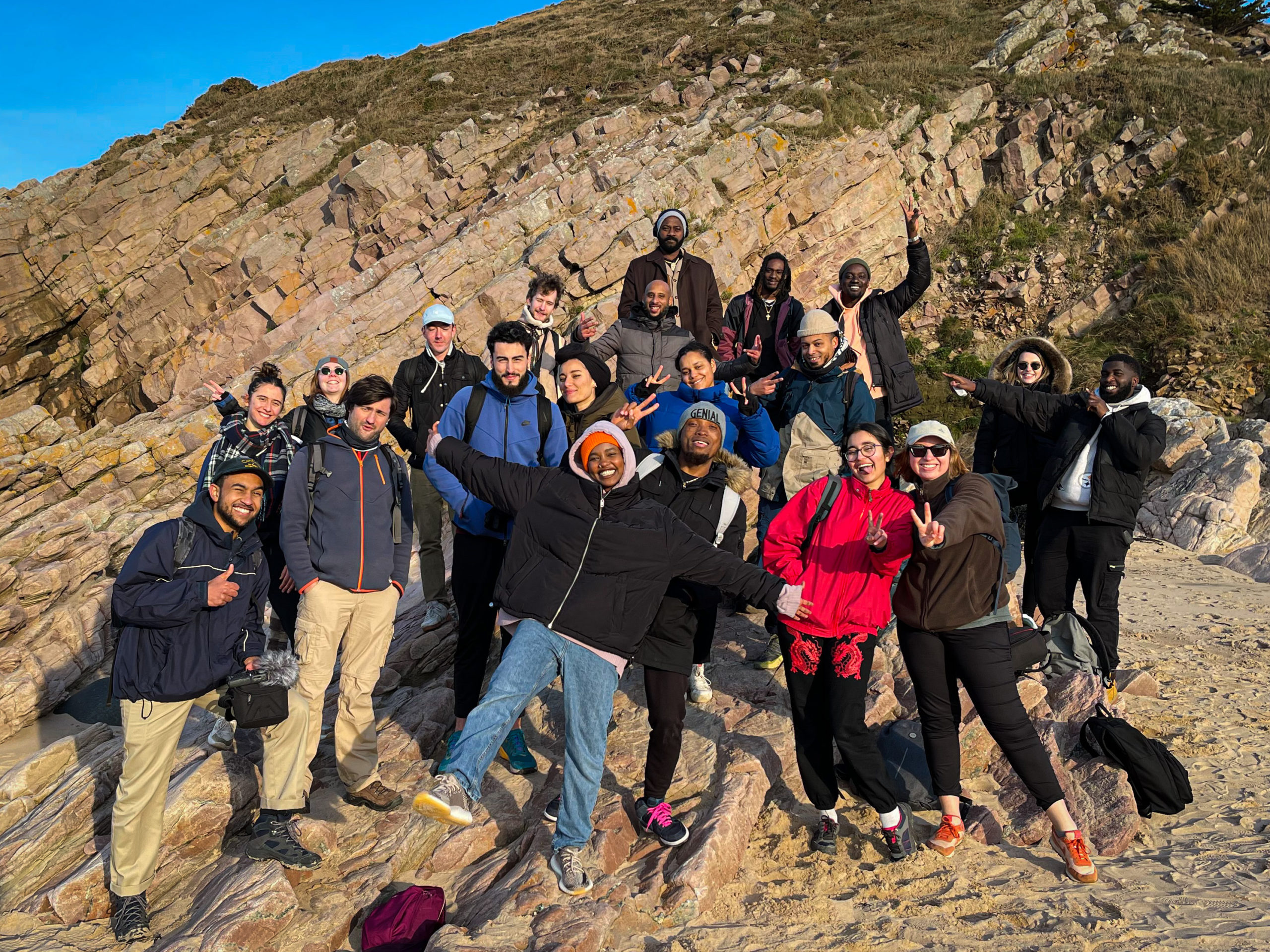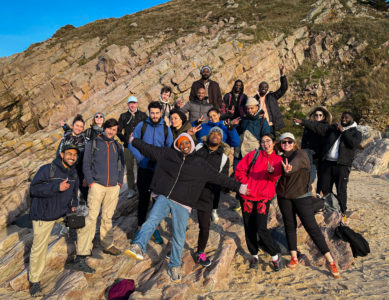First masterclass series (October 2021 to December 2021)
The first event was a demonstration of and introduction to beatmaking and writing, organised by two of the main artist facilitators of DMZ (Msath and L’Authentique). Their aim was to present the different steps in the songwriting process:
- Beatmaking: how to use specialized software (FL Studio), both to create rhythm and melody loops and to structure and arrange a musical production.
- Writing: learning the notions of rhythm, time and lyrics
DMZ then launched a series of beatmaking workshops lead by Msath. We enlisted around ten participants for four sessions which took place both at the EHESP and on the Beaulieu campus of Rennes 1 University. During these sessions, two musical pieces were composed. These served as material for the series of writing workshops. The workshops enabled us to delve deaper into beatmaking techniques.
Two-week workshop dedicated to musical creation and expression
In the context of European Erasmus+ project “COME:ON!”, the DMZ’s artists were asked to lead two series of workshops dedicated to musical creation and expression, for various groups of young people living all over Europe: Rennes, Brussels, Bologna, Riga, Manchester, etc. These series of workshops took place in November 2021, at the “Bâtiment à Modeler” (BAM), in Rennes.
The first workshop series focused mainly on computer music and rap practices. Several Belgian (Communa, L’Artistory) and French (DMZ, DIDA) participants wrote a song. They were able to perform it at the Open Mic which was held in the hall of the BAM as closing event and acknowledgement of their work. About fifteen people expressed themselves in front of an audience of around sixty.
As for the second workshop series, it took the shape of an artistic course which mixed rap practices (introduction to hip-hop, writing, improvisation, etc.) and an introduction to musical instruments (drums, piano, brass instruments, guitar, etc.). This enabled DMZ to create ties with the artists of Khéta, a group that performed live at the auditorium of the former MJC (youth center) Antipode, on 27 November. The journey ended with a grand finale: over 30 amateur artists expressed themselves in front of an audience of 200 during an open stage that combined the musical realms of rap (open mic) and jazz (jam session).
Given the success of these two workshop series dedicated to musical creation and expression, several of the partners involved chose to strengthen their collaboration by producing a video clip directed by Les Films du Macadam. The shooting took place from 14 to 22 December, in Brussels and Rennes. Several vocal takes and videos were able to be made at the recording studio DMZ manages, “La Source”. Thanks to this project, a group of young people were introduced to the entire process of creating music, from A to Z.
Getting the young people to engage in a research process
1– Making their own a question that wasn’t theirs to start with
1.a. Embedded research:
To Have an Impact was founded in order to share adventure content (photos, videos, trek routes, stories, etc.) through social media, with an audience involved to various degrees in such activities. The members of ToHAI eventually realized that if they really wanted to encourage their community to practice outdoor activities, they just had to organise microadventures in order to see the process through. ToHAI has therefore been setting out with young people for several years now.
Once surrounded by nature, they raising the subject of the geography of absence – and of what should eventually become a sociology of travel – during the first few days. After a few days spent outdoors, they asked the young people questions such as: “what have you noticed about the people you have met since the beginning of the microadventure?”, or “why haven’t you ever come to such a place before?”.
Being geographically and socially immersed, as they are, in what will become the subject of their study, the young people spontaneously start making observations, wondering, building hypotheses, offering fragments of diagnosis, asking questions and giving answers.
1.b The facilitators introduce methodology:
As the young people gradually engage in a research process, the facilitators get a head start. In other words, they begin investigating before the young people become the actual investigators. During each stay, the facilitators thus organise group and one-to-one interviews up in the mountains. These interviews are recorded. They also use mind mapping, among other techniques. As a result, the young people can observe what it is to do research, without knowing that they will themselves be the researchers in a few weeks’ time.
2 – Finding possible answers
2.a Young researchers conducting their first interviews
Following on from the dynamic which had taken place during the summer, ToHAI continued conducting group and one-to-one interviews from September to December, with young people from Rennes, Redon, Paris and its suburbs, and from various French regions in general. These were conducted in two different ways: face-to-face whenever possible (especially for the young people from Rennes and Redon), remotely when it was not, thus making it possible for everyone to participate in the study.
These interviews confirmed ToHAI’s initial hypotheses and enabled them to fine-tune our analyses.
2.b Instagram: a tool for research and disseminating
In order to offer still better access to their activities, ToHAI decided to use Instragram as a means to refine and complete their research, as well as a way to disseminate their first results.
In December, during most young French people’s school holidays, ToHAI created a poll based on their first analyses which lasted a few days. They wanted to reach out to a wide number of young people, and with over 150 answers, most definitely succeeded in doing so. They then posted their first results on Instagram to spark their online community’s curiosity and start offering a few answers to those who had completed the poll (and to everyone else).
And that was the end of the first phase.

